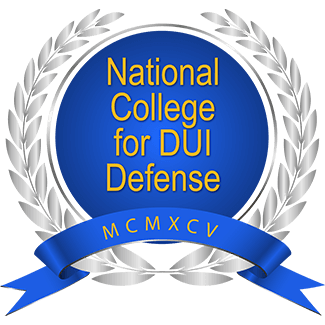- Free Consultation: (844) WIRTH-LAW Tap Here to Call Us
How Do I Avoid a False Positive Reading on a Breathalyzer Test?

Drivers with a breathalyzer in their vehicle should avoid certain substances before using the device to minimize the potential for a false positive reading.
Many of the permits issued by the Secretary of State mandate an individual to have the Breath Alcohol Ignition Interlock Device (BAIID) installed in their vehicle as a condition of driving. The BAIID requires a driver to submit to breath alcohol testing at the time of starting their vehicle, while also prompting them to perform rolling retests while operating their vehicle.
The BAIID is designed to monitor a driver’s BAC level while driving as a safeguard against driving under the influence. The machine is equipped with a camera that takes a photo of the driver at the time of testing. The camera helps prevent positive readings from being attributed to the permittee if another person is using their vehicle at the time of the reading. The camera function is not a video camera – it does not tape you while driving, it only takes a photo of you when you are testing.
When a client has a BAIID in their vehicle, our office provides two general guidelines to help minimize the occurrence of false positives on an interlock device:
1. Wait twenty minutes after putting anything in your mouth before submitting to a BAIID test; and
2. Use soap to clean yourself or your car since many cleaning products contain alcohol.
We recognize that there are situations where a person does not have the time to wait twenty minutes to start their vehicle and may accidentally contaminate the machine with an outside substance. However, as a very broad rule of thumb, these two practices will help lessen the probability of false positives on a BAIID device.
We also encourage people to avoid certain substances before using a breathalyzer that may produce a false positive reading. There are different technologies used for testing devices. Therefore, we cannot create an exhaustive list since some devices are not triggered by contaminants that may affect other types of devices. However, some items that may affect the BAIID include the following:
Mouthwash – Many types of alcohol-based mouthwash contain a high percentage of alcohol – as high as 26% in some brands. So even though you don’t ingest mouthwash, there could be enough alcohol on your breath to register a false positive in a short time-period after use.
Breath spray – As with mouthwash, many breath freshener sprays contain high amounts of alcohol, which may lead to a positive reading on the device.
Fruit drinks and other beverages – There can be some fermentation in fruit drinks, kombucha, and energy drinks that may cause a minimal amount of alcohol to register on your interlock device.
Cough Syrup – Some cold and cough syrups contain high amounts of alcohol, which may cause a positive reading on the interlock device. We encourage interlock users to opt for an alcohol-free cough syrup whenever medically appropriate.
Hand Sanitizer – Most hand sanitizers contain a large percentage of alcohol in their ingredients. If possible, we encourage interlock users to sanitize with soap and water to avoid breathalyzer contamination during use.
Perfumes and Colognes – Some perfumes and colognes have alcohol as an ingredient. If a breath sample is contaminated in the passenger cabin with the spray, it may result in a false positive reading.
Chemicals and Cleaners – Some auto and trade products contain alcohol, such as windshield washer fluid and paint thinner. Although poisonous to ingest, the fumes from the product may contaminate the breathalyzer for a brief period if in close contact with the device.
If a BAIID user has a failed interlock test, the Secretary of State may write a letter to request an explanation for the positive reading. The State allows twenty-one days to provide a written explanation relating to the cause of the reading. If the test was contaminated, the BAIID user should provide supporting documentation to demonstrate that the reading was not related to legitimate alcohol use. If surrounding tests were passed, this factor should be highlighted in the response. In cases where the State accepts the response, it is not deemed to be a violation of the BAIID program.
The best solution to avoid testing failures to avoid alcohol use and products containing alcohol when using the BAIID device. The Secretary of State is not obligated to accept any explanation and a person’s credibility may become diminished if they accrue multiple BAIID readings due to alleged contamination. The best rule of thumb is to avoid drinking alcohol altogether, while waiting twenty minutes before the test after ingesting any food item or handling alcohol-based chemical products.
NOTE: This article is not legal advice and does not create any attorney-client relationship. We encourage persons to consult with an attorney on the specific facts of their case.
Jennifer Wirth has been practicing DUI defense and driver’s license reinstatement law in Illinois for over two decades. For a free consultation, please contact the office at contact@wirthlaw.org or call (312) 761-8290.








